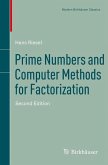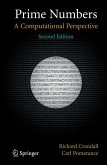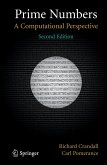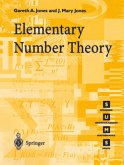In the modern age of almost universal computer usage, practically every individual in a technologically developed society has routine access to the most up-to-date cryptographic technology that exists, the so-called RSA public-key cryptosystem. A major component of this system is the factorization of large numbers into their primes. Thus an ancient number-theory concept now plays a crucial role in communication among millions of people who may have little or no knowledge of even elementary mathematics. The independent structure of each chapter of the book makes it highly readable for a wide variety of mathematicians, students of applied number theory, and others interested in both study and research in number theory and cryptography.
Here is an outstanding technical monograph on recursive number theory and its numerous automated techniques. It successfully passes a critical milestone not allowed to many books, viz., a second edition... All in all, this handy volume continues to be an attractive combination of number-theoretic precision, practicality, and theory with a rich blend of computer science. -Zentralblatt MATH
The book...is an enthusiastic introduction to some of the ideas concerned with primes and factorization. It should be of interest to anyone who would like to learn about the use of computers in number theory. -Mathematical Reviews
The book...is an enthusiastic introduction to some of the ideas concerned with primes and factorization. It should be of interest to anyone who would like to learn about the use of computers in number theory. -Mathematical Reviews
Here is an outstanding technical monograph on recursive number theory and its numerous automated techniques. It successfully passes a critical milestone not allowed to many books, viz., a second edition... All in all, this handy volume continues to be an attractive combination of number-theoretic precision, practicality, and theory with a rich blend of computer science. -Zentralblatt MATH
The book...is an enthusiastic introduction to some of the ideas concerned with primes and factorization. It should be of interest to anyone who would like to learn about the use of computers in number theory. -Mathematical Reviews
The book...is an enthusiastic introduction to some of the ideas concerned with primes and factorization. It should be of interest to anyone who would like to learn about the use of computers in number theory. -Mathematical Reviews
"Here is an outstanding technical monograph on recursive number theory and its numerous automated techniques. It successfully passes a critical milestone not allowed to many books, viz., a second edition. Many good things have happened to computational number theory during the ten years since the first edition appeared and the author includes their highlights in great depth. Several major sections have been rewritten and totally new sections have been added. The new material includes advances on applications of the elliptic curve method, uses of the number field sieve, and two new appendices on the basics of higher algebraic number fields and elliptic curves. Further, the table of prime factors of Fermat numbers has been significantly up-dated. ...Several other tables have been added so as to provide data to look for large prime factors of certain 'generalized' Fermat numbers, while several other tables on special numbers were simply deleted in the second edition. Still one can make several perplexing assertions or challenges: (1) prove that F\sb 5, F\sb 6, F\sb 7, F\sb 8 are the only four consecutive Fermat numbers which are bi-composite; (2) Show that F\sb{14} is bi- composite. (This accounts for the difficulty in finding a prime factor for it.) (3) What is the smallest Fermat quadri-composite?; and (4) Does there exist a Fermat number with an arbitrarily prescribed number of prime factors? All in all, this handy volume continues to be an attractive combination of number-theoretic precision, practicality, and theory with a rich blend of computer science." -Zentralblatt Math








